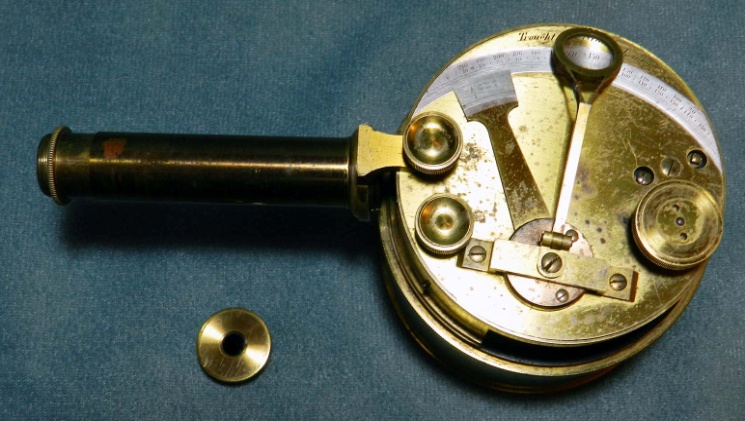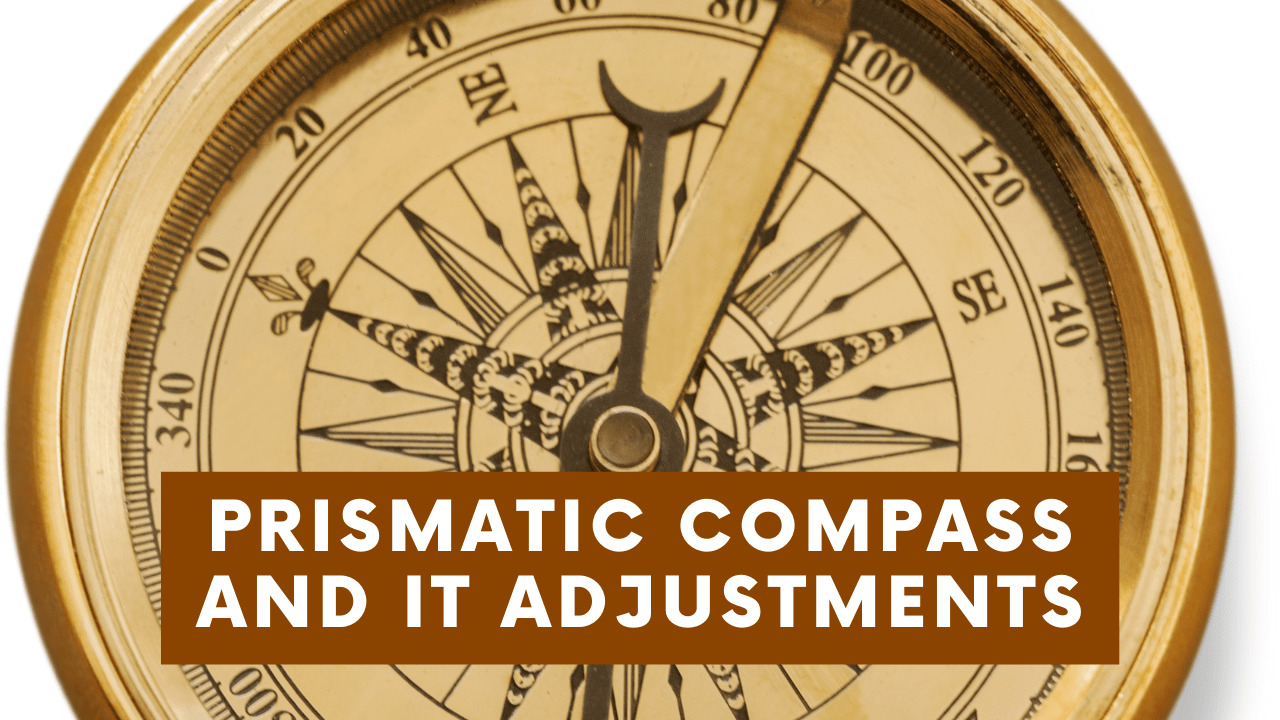Table of Contents
Survey Using Minor Instruments
In this article, we will discuss the minor instruments that can be used for surveying. Let’s start with a discussion of some basic terms and purpose of the survey and learn how it performs an essential role in Civil Engineering.
Surveying
The surveying is the art of determining the relative positions of different objects on the surface of the earth, by measuring the horizontal distance between them and then preparing a map in correct proportions. These measurements are taken in a horizontal plane only.
Leveling
The art of identifying the relative positions of objects (they can be natural or man-made) by taking measures in a vertical plane.
Objective of Surveying
Its main objective is to prepare a map so that we can compare the original and the relative positions for the objects.
As maps are drawn on some scale, which is the graphical representation of the features on the surface of the earth, with the help of these maps or plans we can easily observe the whole location.
Minor Instruments
There are some of the minor instruments that we will discuss in this article.
1)Clinometer
Definition
It is an instrument for measuring angles of slope, elevation, and depression of an object with respect to gravity. It is also known as an inclinometer. It can be used in many professions like forestry and surveying.
Principal
It measures in the vertical plane the incline of a surface that is concerning a basic horizontal plane.
Objective
- The most common application is to measure angles.
- It can measure both inclines and declines.
Components of Clinometer
- Rotatable disc
- Sensitive Vial
- Scale
Working
- The bubble on the vial is in the center position.
- When the clinometer is on the horizontal surface, the scale of the rotatable disc will be at zero position.
- When the clinometer is on the inclined surface, the bubble will deviate from its center.
- It can be brought in the center with the help of the rotating disc and then the rotation of the disc can be read on the scale.
- It shows the deviation of the surface on which the clinometers are placed.
2)Ceylon Ghat Tracer
Definition
It is a simple instrument that is used for measuring angles and the setting of grades, by locating points on a given gradient.
Principal
This instrument is commonly used for preliminary surveys in hilly areas.
Objective
- To measure the angle of slope with target and pole.
- The work can be done quickly by this instrument.
Components of Ceylon Ghat Tracer
- Hollow brass tube (peep hole at one end and cross wires at the other)
- Horizontal racked bar
- Weight moved along the rack
- A-frame with a hole at the top
Working
To measure Slope
- Firstly, adjust the instrument on the stand and hold it towards one end of the line and keep the target at the other side.
- By using the eye hole, we will move sliding weight gradually until the line of sight passes the cross mark of the vision vane.
- Then note the reading from the index edge of weight that is the value of the slope.
To set out a gradient
- Grab the instrument and send your assistant with the target.
- After that slide the weight to a given gradient.
- Then direct your assistant to move the target (raise or lower) so that it would get bisect.
- When it gets bisected then drive a peg at the other end.
3)Hand Level
Definition
It’s a handheld telescope with an attached spirit level. It is a simple and compact instrument that is used for reconnaissance and preliminary surveys for location contours on the ground.
Principal
It is generally used by surveyors to compare multiple points against a reference point to get the approximation of levels and distances.
Objective
- Hand level is mainly used for rough leveling.
- It saves time as compared to setting up a tripod for leveling
Useful in bricklaying, fencing, etc.
Components of Hand Level
- Rectangular or circular tube (10 to 15 cm long) with a small bubble on it
Working
- Hold the hand level in your hand at that level of sight at which you can also observe the staff at that point easily. You make sure that you should not cover the spirit vial.
- Then depending upon the reference point, you need to raise the lower end of sight level.
- Do it until that bubble comes in center to the center line of the instrument.
- Note the reading from the staff that would be the level for that point.
Moreover, if you want to get a more accurate reading you should place the instrument on the table or any plane surface.
4)Box Sextant
Definition
This is a reflecting instrument that has the capability to measure the angle up to 120o with an accuracy of one minute. It is called sextant because its limb has the one-sixth part of a circle.
Principal
When the ray of light is reflected from two mirrors, the angle between the incident and reflected ray is twice the angle between the mirrors.
Objective
- It gives very precise results.
- Main purpose is to measure angles.
Components of Box Sextant
- Graduated arc
- Adjusting key
- Eye hole
- Horizon and Index Glasses
- Index arm
- Sunglass
- Vernier at the end of the index arm
Working
To measure the horizontal angle
- Hold the instrument in your left hand and observe the object through the eye-hole.
- Now by using your right hand turn the screw until you get the image reflected from the index glass into the horizon glass.
- When both reflections coincide, get the reading from the arc to acquire the angle.
To measure the vertical angle
- The process if same just you need to hold it vertically.
- By viewing the lower object, turn the screw till the higher image get coincide with the lower one.
- Then we get the angle from that arc.
5)Planimeter
Definition
This instrument is also used in surveying, to measure the area of any shape. Although it is very difficult to calculate the area of irregular plots but with the help of plainimeter you can do it very conveniently.
Components of Planimeter
- Tracer arm
- Tracing point
- Anchor arm
- Hinge
- Wheel
- Graduated arm
- Disc
- Adjusting screw
- Vernier
Working
- The plan of given shape is required.
- At first, the anchor point need to fix at a point, the anchor point will be at outside if the area is small otherwise it would be inside.
- Now place the tracing on the outline using tracing arm, mark a point and note the vernier reading as an initial reading.
- Now trace the whole outline very carefully in clockwise direction.
- Now take the vernier reading as final reading.
- The area can be calculated using this formula in which
- A = Initial reading
- B = Final reading
- N = No. of revolutions
- C = Constant of planimeter
6)Pantagraph
Definition
This instrument is used for the reproduction of map, for enlarging and reducing of a map.
Principal
Its working principle is similar triangles.
Components of Pantagraph
- Tabular arms
- Rollers
- Sliding index
- Weight
Working
- It consists of four arms that are arranged in form of parallelogram. These arms are also graduated with divisions.
- To enlarge a plan the tracing point, pencil and fulcrum will be in straight line.
- Then after the running of tracing point on the blank spaces, the pencil can be lifted off the paper.
- In case of reducing a plan, the tracing point is on original plan while the pencil is on the drawing sheet to draw a new plan.
Note: This is usually used for reducing plans because it does not give such good results for enlarging the plan.





 Useful in bricklaying, fencing, etc.
Useful in bricklaying, fencing, etc.





